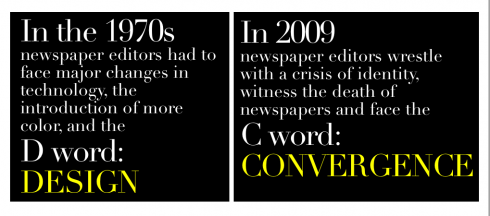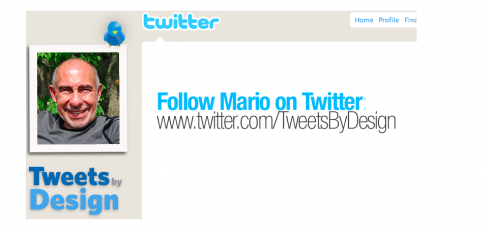
You can bank on it: traditional newspaper editors are a conservative bunch.
They love to report the new and the exciting and the changing—-but they are the last to join any major changes within their organizations and profession.
How can one forget the era of the 1970s and newspaper editors everywhere, but, especially in the United States: it was a time of visual revival for newspapers; many were acquiring brand new printing presses that would permit them to use color.
Most were abandoning antiquated newsroom production systems, and getting into computers and the so called VDT’s (video display terminals), which were big and clunky but which would allow editing on the screen. Out went paper editing, sticky glue pots to paste the pages together, not to mention editing pencils, pica poles, and grease pencils and cropping rules.
And while the technical transition was not so painful in most newsrooms, the mental shift to “designed” newspapers REALLY WAS.
Die hard editors would ask if so much color was truly necessary. “Doesn’t color cheapen the quality of the paper, take away from its serioismess and grabitas?”
The answer was, of course: Not really, and not if one uses color wisely, and not as decoration. This rule still applies.
Art directors arrived in newspapers, but not with huge welcome signs outside the entrance to the newsroom. The term art directors was rarely used, as it reminded conservative editors of magazines and an artistic world they did not wish to be part of.
Eventually DESIGN directors became important persons in the newsroom, design came to most dailies, and editors began to enjoy their better looking newspapers, use of graphics, and smart utilization of color.
Convergence is the “design” of the 2000s
Today, many editors are facing similar doubts, fears and apprehensions.
This time it is about converting their newsrooms to multi-platform environments. This time it is not about the look of the paper, but the path of the story, how they react to news as it breaks, and how to work in a variety of platforms.
Since I have lived through the early 1970s era of “introducing design” to a skeptical group of editors, I see the similarities as we introduce multi-platform editing to the editors.
The editors need reassurance. They need to know that what they do is still important, although times have changed dramatically.
I see the same blank faces that ask: Must we truly do this?
But i know that, in the end, they will embrace it, adapt to new ways, and even enjoy storytelling in a multi platform world that allows them better tools.
A matter of time.

:
To read TheRodrigoFino blog, in Spanish, go:
https://garciamedia.com/latinamerica/blog/
TheMarioBlog posting #251